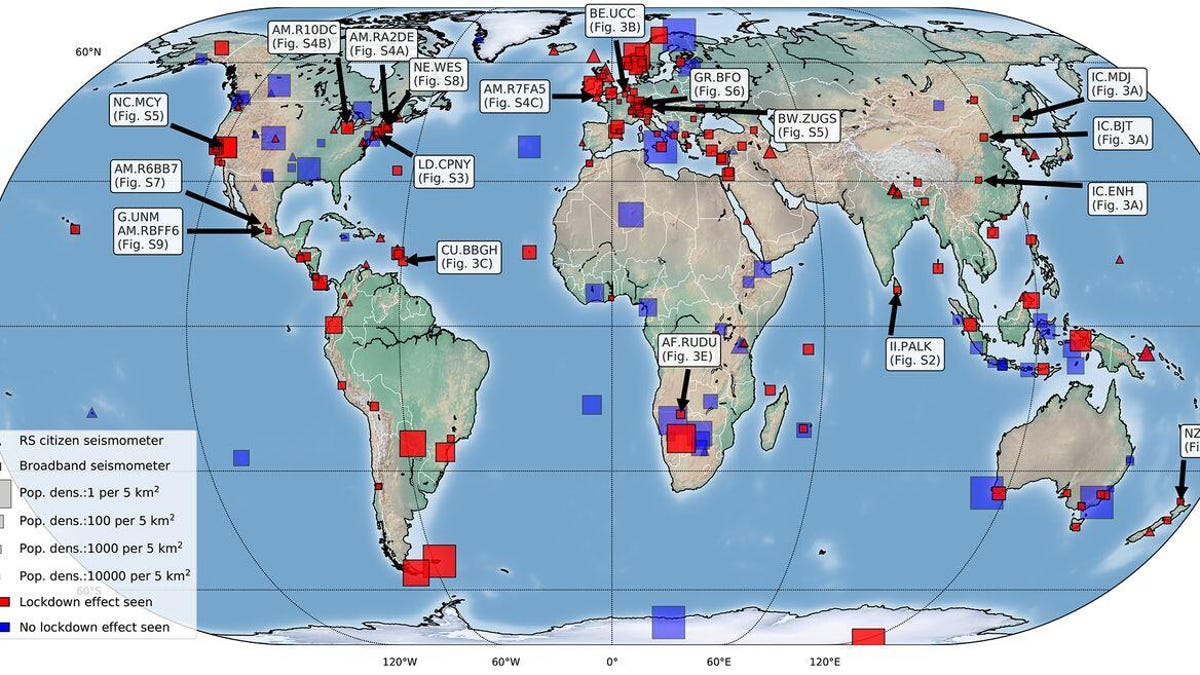COVID-19 quarantines reduce seismic noise across the globe
Human activity decreased so much during coronavirus lockdowns that seismic noise fell by up to 50 percent.

COVID-19 lockdowns resulted in a global seismic noise reduction.
Lockdowns imposed due to the coronavirus pandemic have resulted in a seismic noise reduction of up to 50 percent across the globe. Human activity causes high-frequency seismic waves from vibrations. But due to COVID-19 stay-at-home orders, the 2020 seismic noise reduction has become "the longest and most prominent global anthropogenic seismic noise reduction on record," scientists reported Thursday in the journal Science.
The paper examined seismometers across the world, finding that lockdowns -- which they said included full quarantines, physical distancing measures, travel restrictions and the closure of businesses and services -- resulted in significantly reduced seismic signals caused by human activity.
"Measures to mitigate the COVID-19 pandemic caused widespread changes in human activity, leading to a months-long reduction in seismic noise of up to 50 percent," the paper says.
Seismic noise from human activity is measured constantly to help warn of local geological hazards, the paper says. Typically, there's less noise at night, on weekends and during the holidays in regions that celebrate Christmas and New Year. But due to COVID-19, scientists observed a global seismic noise reduction even quieter than Christmas that began in January in China and spread to Europe in March and then the rest of the world in April.
Read more: The best face masks for exercising
High-Frequency Seismic Ambient Noise (hiFSAN) in New York's Central Park was around 10 percent lower during lockdown. In Belgium, there was a 33 percent hiFSAN reduction. And in vacation destinations like Barbados, which have been impacted due to a decrease in tourism, hiFSAN decreased by 45 percent following lockdown in March and April -- and was 50 percent lower than in previous years during the same months.
Overall, the paper says global median hiFSAN fell by 50 percent in March to May 2020.

